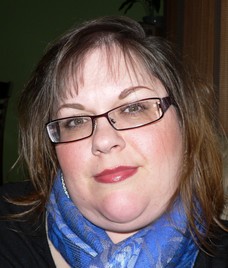by unsigned editorial
Source: The Montreal Gazette
URL: [link]
Date: May 18, 2011
MONTREAL - By the time Stephen Harper’s term as prime minister is over, four years from now, more than half the judges who make up the country’s top court will have stepped down.
Some departures – like the two announced last week by Justices Ian Binnie and Louise Charron – are by choice, others because the judges will have reached the mandatory retirement age of 75. As head of a majority government, Harper will be free to impose his vision on the nine-member court.
Canadians who believe the current Supreme Court justices are too inclined to make decisions that are Parliament’s to make will look forward to a Harper-influenced court.
Those who think the Supreme Court is already too timid in protecting Charter rights and civil liberties fear a highly politicized court too deferential to Parliament.
Unfortunately for most Canadians, figuring out whether either scenario is plausible requires the analytical ability of a Kremlinologist at the top of his or her game. Little is known by the general public about the current sitting justices – how many of them can you name off the top of your head? – and far less about those who might replace them.
The process by which judges are appointed to the top court traditionally ensured that they remained close to anonymous and their workings opaque. Until 2006, a prime minister together with a justice minister made the selection behind closed doors. The public was provided with a bare-bones announcement: a name and a province of origin.In 2006, Harper introduced a change: an all-party committee empowered to hold a parliamentary screening process during which a candidate – in 2006 it was Marshall Rothstein of Manitoba – could be questioned on his or her rulings and political affiliations.
Rothstein’s was a three-hour pro-forma appearance. The process was as far from the United States’ no-holds-barred confirmation hearings as you could get – by design. Most Canadians recoil from the often-messy American system, which has thrown up such disappointments as Clarence Thomas, who famously did not utter a word from the bench for more than five years.
In 2008, when Harper made his second appointment, Nova Scotian Thomas Cromwell, the prime minister dismissed the idea of hearings before a parliamentary committee as too time-consuming and partisan an exercise. We were back to a name and a province.
Canadians deserve to know more than that about the men and women with the power to make landmark decisions on issues such as aboriginal rights, abortion, the rights of the accused, the right to freedom of expression, matrimonial property and domestic violence.
We need to know what qualities are sought; what kind of experience, knowledge and empathy is required; how the perennial question of bilingualism on the top bench will be dealt with; whether our top jurists have what it takes to withstand partisan pressure.
We should have at least a few hours to get to know the men and women who sit on the country’s highest tribunal.
© Copyright (c) The Montreal Gazette
Change.org Petition
Follow Us
Search Justice for Mohamed Harkat
Navigation
Mohamed Harkat
Click on the photo of Mohamed to see all items related to him.

JUNE 2017: Mohamed Harkat once again faces deportation to his native Algeria after the Supreme Court of Canada declared the federal government’s security certificate regime constitutional. This fight is not over. The Justice for Mohamed Harkat Committee will re-double its efforts to see that justice is done for Mohamed Harkat and that the odious security certificate system of injustice is abolished once and for all.

JUNE 2017: Mohamed Harkat once again faces deportation to his native Algeria after the Supreme Court of Canada declared the federal government’s security certificate regime constitutional. This fight is not over. The Justice for Mohamed Harkat Committee will re-double its efforts to see that justice is done for Mohamed Harkat and that the odious security certificate system of injustice is abolished once and for all.
Statements of Support
Contact Us
RSS Feeds
Fair Use Disclaimer: This site contains copyrighted material the use of which
has not always been specifically authorized by the copyright owner.
Read the ENTIRE DISCLAIMER...
This Website is powered by the e107 content management system.








